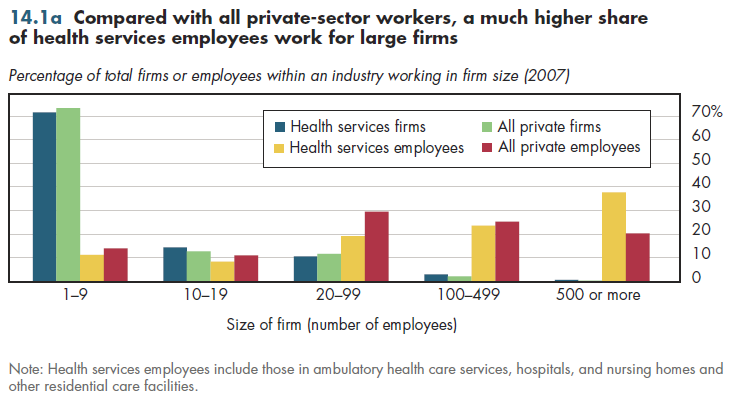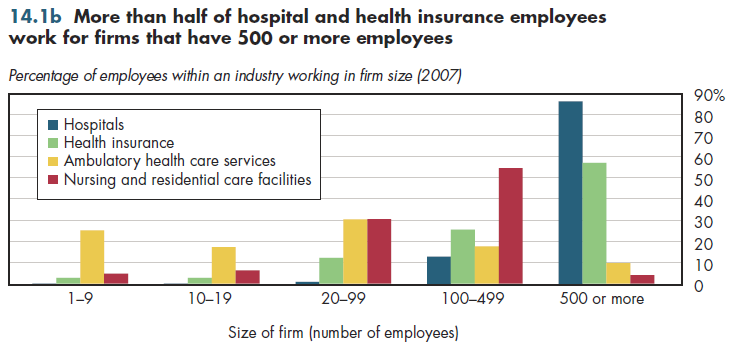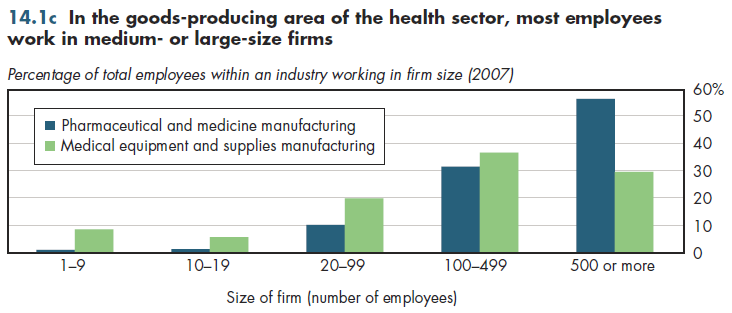More than 70 percent of health sector firms employ fewer than 10 employees (figure 14.1a). This is almost identical to the number for all U.S. private businesses. However, only approximately 10 percent of all health sector workers are employed by such firms, somewhat lower than for private business overall. In fact, relative to all private businesses, health sector workers are somewhat "underrepresented" in all firm-size categories up to 500 workers. In contrast, almost 40 percent of health care employees work in organizations that have 500 or more employees—almost double the national average. In both health care and private industry, such firms account for much less than 1 percent of all firms. This is almost invisible in figure 14.1a.

At one further level of detail, hospitals, the insurance industry, and pharmaceutical industry represent subsectors in which more than half of workers work in the largest firms. In hospitals, fewer than one in six workers works in facilities that have fewer than 500 employees (figure 14.1b). Not surprisingly, there are few hospitals with fewer than 100 workers. In the insurance industry—specific figures for health insurance are not available—more than half work in the largest firms, but another fourth work in medium-size firms of 100-499 employees. On the goods-producing side of health care, more than half of pharmaceutical manufacturing employees but fewer than 30 percent of medical equipment manufacturing workers work in the largest firms (figure 14.1c).


Note that there is no consensus about the dividing line between large- and medium-size firms. Some draw the line at 100 or 200 workers, but under virtually all definitions, a firm that has 500 or more workers is a large employer. Using the most expansive definition—a cut-off at 100 workers—99 percent of hospital workers, nine in 10 pharmaceutical industry workers, and approximately 75 percent of health insurance workers would be counted as employed by large firms. Over the past 30 years, the percentage of workers accounted for by health services has risen in all firm sizes; such growth has been fastest among the largest organizations.
Download PowerPoint versions of all figures.
- Author's calculations.
- Department of Commerce. Bureau of the Census.












